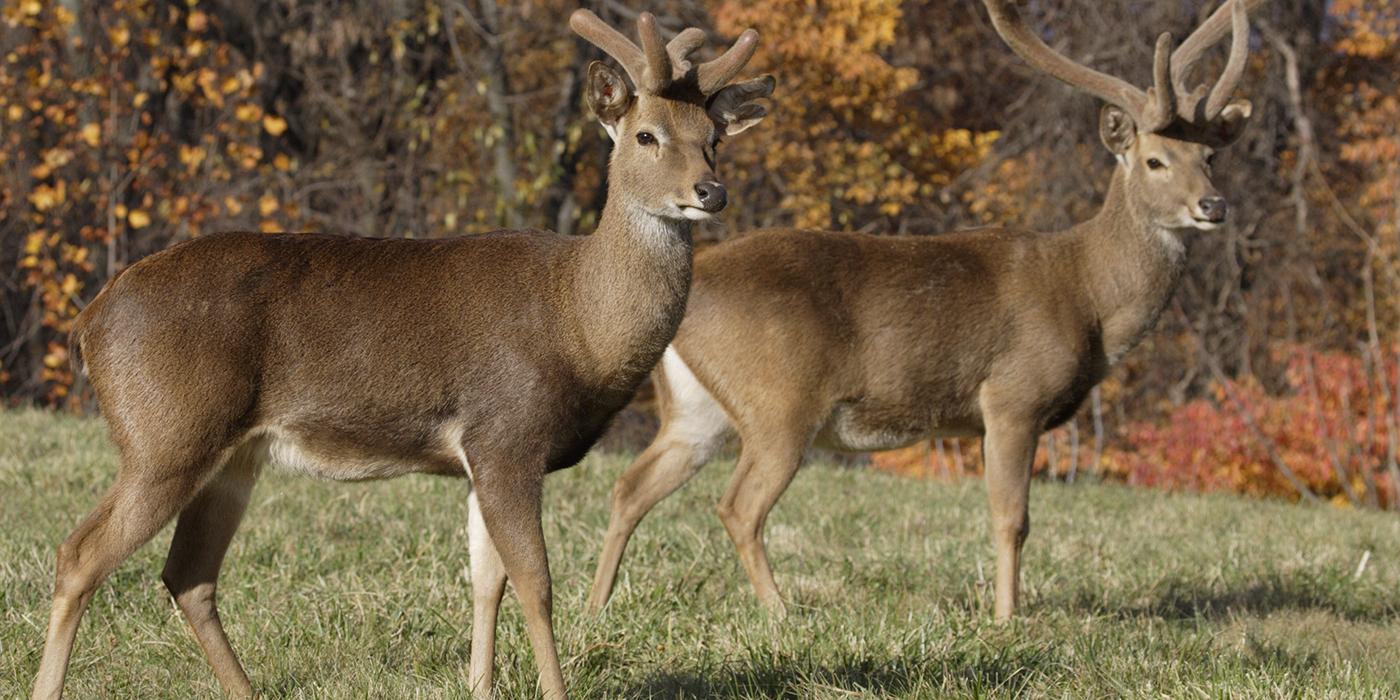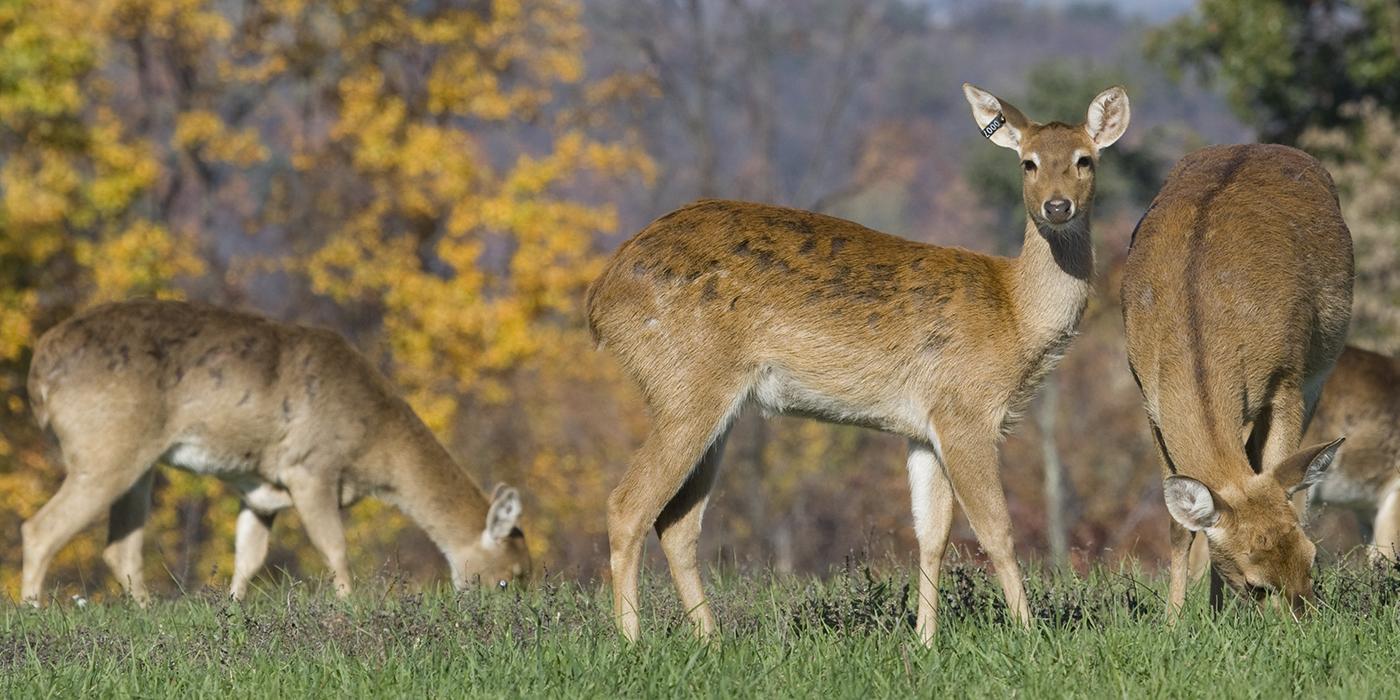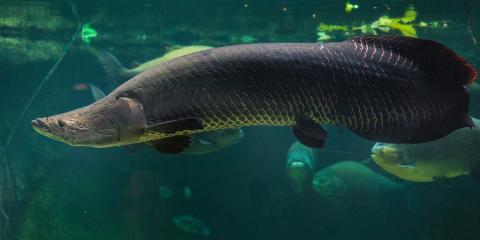Physical Description
Eld’s deer are known for the impressive bow or lyre shaped antlers of the males (stags), which sweep back in a single curve about 99 centimeters (39 inches) long. A smaller tine grows toward the front of the head and is especially noticeable. The antlers are shed every year and reach their largest size during the breeding season.
The imposing species has a very regal and graceful deer physique. Its legs are long and thin, and it has a long, slender body with a large head and ears. Their coats are rough, coarse and change color with the season. In summer, they are reddish-brown with paler underparts. In winter, their coats are dark brown. Stags tend to have darker coloring than hinds and possess a thick mane of long hair around the neck. The tail is short in length and the rump has no distinct patch. The antlers, bow - or lyre-shaped, tend to grow outward and then inward; a smaller branch grows toward the front of the head.
Size
Native Habitat
The Eld’s deer is indigenous to Southeast Asia and was formerly widely distributed from the Manipur region of northeastern India through much of Myanmar, Thailand, Lao PDR, Cambodia and Vietnam to the island of Hainan, China, in the east. The deer inhabited suitable forest habitats, lowland valleys and plains, avoiding dense forests and coastal areas. Today, Eld’s deer occur in a number of protected areas throughout their former range.
Local projects have helped raise public awareness and support for conserving the deer. Hainan Datian Nature Reserve on Hainan Island, China, was established in 1976 specifically to help the brow-antlered deer recover, with the population now growing an average of 15 percent annually. This population has grown so large, in fact, that Eld’s deer have been translocated to other parts of the island, and a community education project was initiated to raise local awareness about the plight of the deer and the protected status of the sanctuary. Managed populations exist around the world, but inbreeding is common, and cooperative cross-breeding is required if managed populations are to be genetically varied enough for any future reintroduction programs into the wild.
Lifespan
The maximum recorded lifespan of a male Eld’s deer in human care was 16 years. Females can live up to 20 years in human care. Not much is known about the Eld's deer's lifespan in the wild.
Food/Eating Habits
Eld’s deer are closely associated with areas that are seasonally burned, eating the new grasses as they emerge after the fire. Grass and forbs make up the main part of their diet, which includes a variety of grasses, fruits, herbaceous and wetland plants. The species is known to graze and browse opportunistically on cultivated crops from nearby fields, such as rice, lentils, maize and peas. In human care, Eld’s deer are fed a low-protein herbivore diet and alfalfa hay. During the summer months, they are also given pasture access. Pastures must be free of fescue grass, because the deer are susceptible to fat-necrosis often associated with ingestion of endophyte-infected fescue.
Reproduction and Development
Female Eld’s deer are generally found alone or in pairs with their young. During the mating season, females and their young gather in herds of up to 50 individuals. Males also move around singly, except during mating season. When rutting takes place, males compete with each other to gain control of a harem of females with which they can mate. The breeding season takes place from Feb. to April. After a long gestation period of 34 weeks (220 to 240 days), a single fawn is born between Oct. and Nov. Like most deer species, hinds hide their young immediately after birth, concealing them in the long grass. Fawns are weaned at around five to seven months and become sexually mature at one-and-a-half to two years of age. The young have white spots at birth, which fade away as they grow.
Conservation Efforts
The Eld’s deer is classified as endangered on the IUCN Red List and the population has declined by more than 50 percent over the last 15 years. Approximately 1,500 individuals remain in the wild. Given the species' habit of inhabiting open grasslands, especially near water, Eld's deer have been an easy target for hunters. Eld’s deer are widely hunted as food and for their antlers. In particular, Eld’s deer are thought to have been hunted to feed armies during many Asian wars.
They are a prized game animal, because of their impressive antlers and hides, which are sold in the local markets. Habitat destruction due to expanding agriculture, primarily due to wetland reclamation for grazing, cultivation and fish farming, has also had a major impact on this rare species.
Its current range is now limited to small, localized areas within its former range. Very little suitable habitat is protected; only one percent of the protected forests in Southeast Asia are suitable for Eld’s deer. Even within protected areas, these threats continue. Due to its highly fragmented distribution, this species is also at risk from inbreeding and loss of genetic variation.
Currently, 64 Eld's deer are managed in North America at five Association of Zoos and Aquariums accredited institutions. Three of those facilities actively breed Eld’s deer. The Smithsonian Conservation Biology Institute has cared for Eld’s deer since 1976. To overcome the species’ sensitivity to stimuli, SCBI animal care staff slowly acclimate individuals to different sights and sounds commonly encountered in human care, which includes jingling keys, voices, radios, lawn mowers and vehicles.
Acclimation to these sights and sounds allows researchers to work with the deer in ways that would not otherwise be possible. For example, today, the deer can calmly walk onto a scale for routine weighing. Veterinarians are also able to routinely vaccinate and draw blood from the animals without having to use an anesthetic.
With the development of the endocrine lab in 1987, SCBI scientists have been able to study the Eld's deer's reproductive physiology and to characterize the reproductive cycles of males and females by monitoring hormone levels throughout the year. Understanding the reproductive cycle allowed SCBI scientists to develop a successful artificial insemination protocol for this species.
Help this Species
- Support organizations like the Smithsonian’s National Zoo and Conservation Biology Institute that research better ways to protect and care for this animal and other endangered species. Consider donating your time, money or goods.
- Share the story of this animal with others. Simply raising awareness about this species can contribute to its overall protection.





